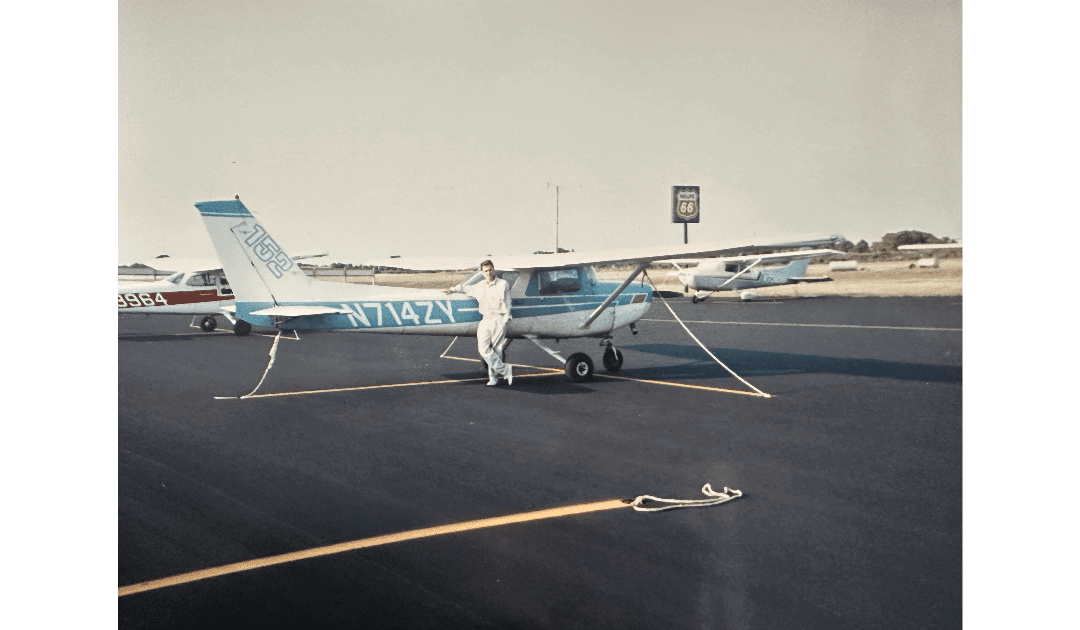That’s me in the photograph standing next to Seven Zulu Yankee, the Cessna 152 that I flew my first solo in. The airfield was Fort Pierce on the east coast of Florida. According to my logbook that was on 31st May 1989. I said in my last post, autopilot, that I could tell a few stories about flying. So here’s one about my first solo.
You might imagine that when your instructor asks you to stop on the taxiway, so that he can get out, then tells you to do two touch and go’s before landing and taxiing back to the apron, that might be rather frightening. It did take me a little by surprise. I knew my first solo was coming, but not exactly when. He slams the door shut, gives you a cheery wave, and off you go. You know that by the time you’re pointing down the runway he’ll be in the control tower beside the controller. “Seven Zulu Yankee cleared for takeoff.” Push the throttle fully in, rudder to control the torque and keep straight, seventy knots, pull back gently on the yoke, and we’re airborne.
I felt as though Joe, my instructor, was still calling out instructions. He wasn’t, but he’d done it so many times that they were running through my head anyway. Before I knew it, I was making the turn onto base leg for my third time solo, then the turn onto final approach. Small changes to power, maintaining the descent and airspeed, then the kiss of rubber on tarmac, and I’d done it.
The first solo is probably the greatest milestone in any pilot’s progression. The signal that your instructor thinks its time, is when he isn’t available and the chief flying instructor flys with you for circuits and bumps.
Three days after my first solo I was on my first solo cross country. I was to feel fear, but not yet. For now I was enjoying the achievement of a lifetime’s ambition. I could fly an airplane on my own.

